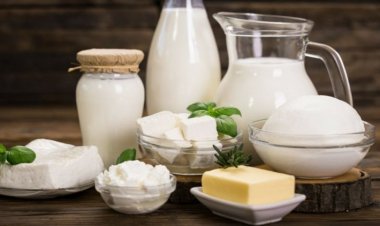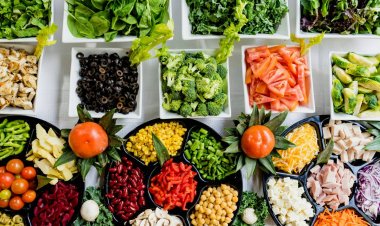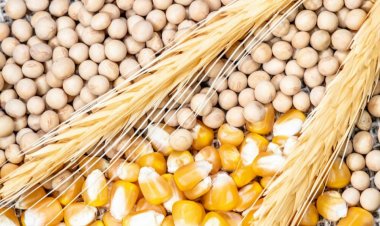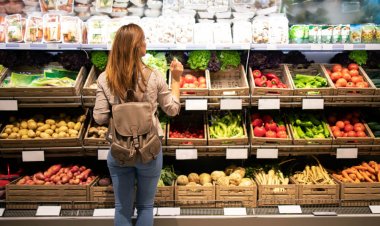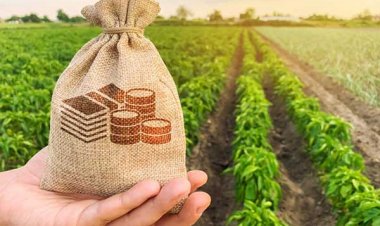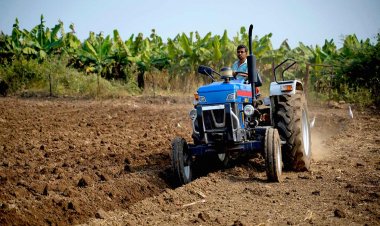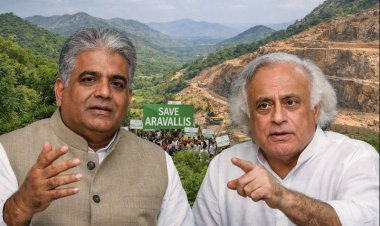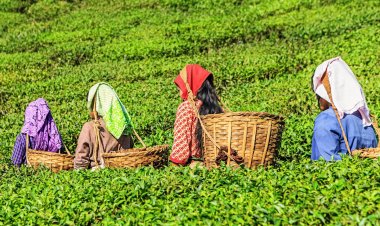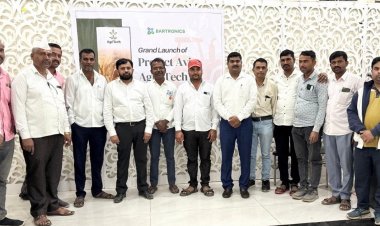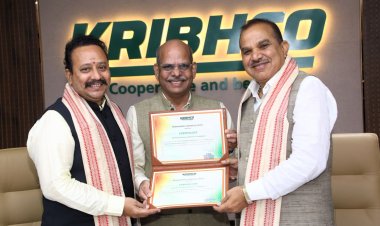Fertilising Bilateral Relations between India and Morocco
The current world scenario demands India to engage intensively in bilateral relations with the countries where fertilisers and raw materials are available abundantly. Morocco, having the world's largest phosphatic reserves, is an apt partner for India, where both countries gain from each other.
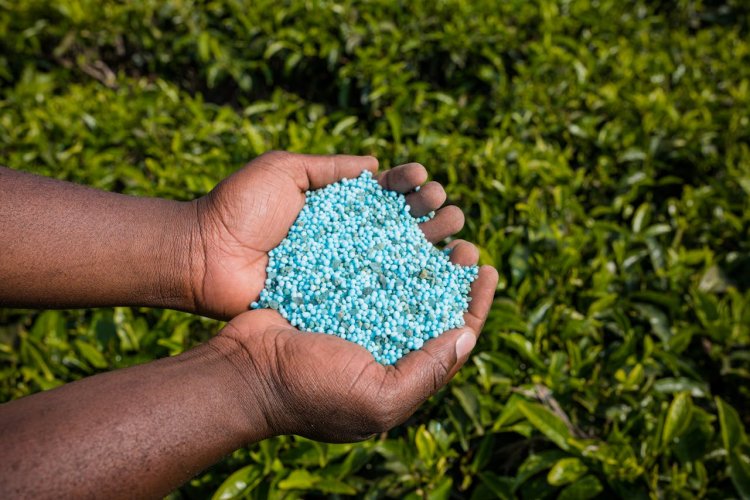
The international market for fertiliser products is highly concentrated, where the market power lies with a few countries. Despite being the second largest producer (in terms of Nutrients) after China, India is the largest importer of fertiliser products and the second largest consumer (after China). This shows the Indian fertiliser sector's high dependence on the international market to meet the domestic demand for fertiliser products. Figure 1 shows India's growing fertiliser import dependence over the years, both in terms of nutrients and products. The reliance has been considerably increasing since 2002-03, reaching 45.6 per cent and 21.2 per cent for complex fertilisers and urea, respectively, in 2022-23. Raw materials' import intensity is also very high, as it stands at 93.3 per cent and 61.63 per cent, respectively, for rock phosphates and phosphoric acid (primary raw materials for phosphatic fertilisers) in 2021-22. On the other hand, India depends entirely on import for potassic fertilisers as there are no indigenous raw materials in India to manufacture it. Given the tendency of international prices to rise whenever India enters as a buyer, India needs a reliant supplier of both products and raw materials to ensure a timely supply of fertiliser products to the agriculture sector.
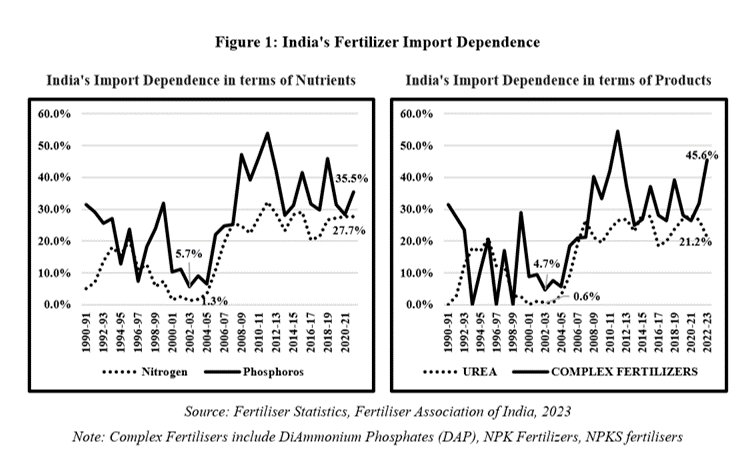
India and Morocco: Fertilising Relationship
The bilateral relations between India and Morocco have been tremendous as the diplomatic relations were established since 1957. The first landmark visit to Morocco has been by Atal Bihari Vajpayee when he was the Prime Minister in 1999, and the following year, the Moroccan PM Abderrehman Youssoufi visited India. Later, in 2001, King Mohammed VI visited India after ascending to the throne. The third India-Africa Forum Summit (IAFS-III) in New Delhi in 2015 intensified relations between these two countries. Since then, more than 40 MoUs/agreements have been signed in areas like counter-terrorism, space, agriculture, etc., and 25 ministerial visits and interactions have happened (GoI, 2023). The trade between these countries had increased because of it. During 2017-18 to 2022-23, total bilateral trade between India and Morocco increased by 196.7 per cent, where the share of India's imports from Morocco in total trade was 70.88 per cent in 2022-23.
Table 1: Bilateral trade between India and Morocco (in million US$):
|
2017-18 |
2018-19 |
2019-20 |
2020-21 |
2021-22 |
2022-23 |
|
|
India's Export |
432.32 (35.7%) |
680.06 (33.9%) |
799.45 (45.6%) |
507.62 (26.1%) |
962.28 (30.0%) |
1047.15 (29.1) |
|
India's Import |
779.63 (64.3%) |
1326.69 (66.1%) |
952.54 (54.4%) |
1436.82 (73.9%) |
2244.19 (70.0%) |
2549.44 (70.9%) |
|
Total |
1211.95 |
2006.76 |
1751.99 |
1944.44 |
3206.47 |
3596.59 |
Source: Ministry of Commerce and Industry, Govt of India
Note: Figures in the parenthesis are share in total trade
The essential items in India's import basket from Morocco are DiAmmonium Phosphates (DAP), rock phosphates and phosphoric acid. Morocco emerged as the world's second-largest phosphatic fertiliser producer in 2020, overtaking the USA, India and the Russian Federation. Given the import dependency on both final goods and raw materials for phosphatic fertilisers, India moved towards Morocco for the phosphatic fertilisers in the last few years as the share of Moroccan DiAmmonium Phosphate (DAP) in India's total DAP import has increased from a mere 2.2% in 2019-20 to 26.54% in 2022-23 (see the figure 2). Morocco also provides raw materials like rock phosphate and phosphoric acid to India to produce different fertiliser products. In 2020-21, nearly 23% and 40% of India's total rock phosphate and phosphoric acid imports were from Morocco. India's reliance on Moroccan large phosphatic reserves started when Indian companies (CFCL and TCL) formed a joint venture company called INDO MAROC PHOSPHORE S.A (IMACID) with OCP, Morocco in Jorf Lasfer in 1999 to supply phosphoric acid with 100% buy-back arrangement. Last year, three MoUs were signed between OCP (Office Chérifien des Phosphates), Morocco, and Indian companies in January 2023, under which OCP is to supply up to 1.7 million metric tonnes of phosphatic fertiliser to India in one year. This long-term agreement will assure India an unchecked supply of finished fertiliser products and raw materials.

Phosphatic fertilisers and raw materials pave the way for healthy trade relations between India and Morocco. With this, India will get a reliable source, and Morocco will get a large market for phosphatic fertilisers and raw materials, which is crucial for the timely availability of the products in the Indian agriculture sector. Through this, India can also reduce its reliance on Chinese products, as China has frequently suspended its exports to the world market to ensure enough fertilisers for the domestic market.
To Conclude
The world fertiliser sector has been highly volatile in the last few years as it has witnessed a fertiliser crisis (See Mankunnummal, 2023 for the reasons and impact it had on the Indian fertiliser sector). The present Red Sea conflicts again create a similar situation as they generate a supply shortage by delaying the availability of fertiliser products in India. The current world scenario demands India to engage intensively in bilateral relations with the countries where fertilisers and raw materials are available abundantly. Morocco, having the world's largest phosphatic reserves, is an apt partner for India, where both countries gain from each other. The long-term agreement of fertilisers ensures India a reliable supply of both final products and raw materials and Morocco, a large market for its products.
---
Ajil Mankunnummal is a Doctoral Scholar at Centre for Development Studies, India ajilmankunnummal@gmail.com
Soufiane Chahid is an Economist, Editor-in-Chief of L'Opinion, Morocco Souf.chahid@gmail.com
(An earlier version of this paper has been published as a story titled ‘Economic diplomacy: How phosphate brought Rabat and New Delhi closer in L’Opinion newspaper, Morocco. https://www.lopinion.ma/Diplomatie-economique-Comment-le-phosphate-a-rapproche-Rabat-et-New-Delhi-INTEGRAL_a48968.html)
References
FAI (2023), Fertiliser Statistics, 2022-23. Fertiliser Association of India, Delhi
Govt of India (2023), India-Morocco Bilateral Relations. Ministry of External Affairs, New Delhi https://www.mea.gov.in/Portal/ForeignRelation/Moracco-2023.pdf
Mankunnummal, Ajil. (2023), Global Fertiliser Crisis and its Impact on the Indian Fertiliser Sector. Economic & Political Weekly, LVIII No 25&26, 50-56. https://www.epw.in/journal/2023/25-26/special-articles/global-fertiliser-crisis-and-its-impact-indian.html




 Join the RuralVoice whatsapp group
Join the RuralVoice whatsapp group

















